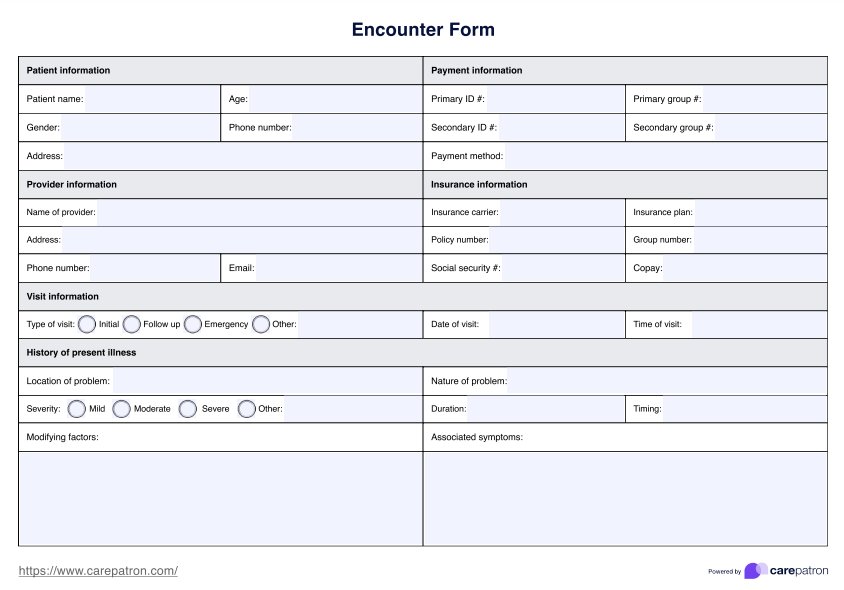An encounter form includes patient details (name, age, gender, address), visit information (date, time, type of visit), and medical history (diagnoses, treatments, and past conditions). It also records services provided (ICD and CPT codes), along with billing details such as insurance information, payment methods, and copays, facilitating both patient care documentation and the billing process.

Encounter Form
Learn how an encounter form works. Access a free printable Encounter Form Template to simplify clinical documentation and billing.
Encounter Form Template
Commonly asked questions
The encounter form ensures accurate documentation of patient visits, streamlines billing with ICD and CPT codes, supports care coordination, helps maintain compliance with medical and insurance requirements, and contributes to creating electronic health records (EHR) for patients.
The encounter form is typically completed by healthcare providers, such as doctors, nurses, or medical assistants, during or after a patient visit. It documents key information about the patient's condition, services rendered, and any treatments or procedures performed. In some cases, office staff may also assist with filling out certain sections, particularly for administrative details like insurance information and billing codes.
EHR and practice management software
Get started for free
*No credit card required
Free
$0/usd
Unlimited clients
Telehealth
1GB of storage
Client portal text
Automated billing and online payments











